Horticulturists Recommend 12 Gooseberry Varieties With Culinary And Dessert Options
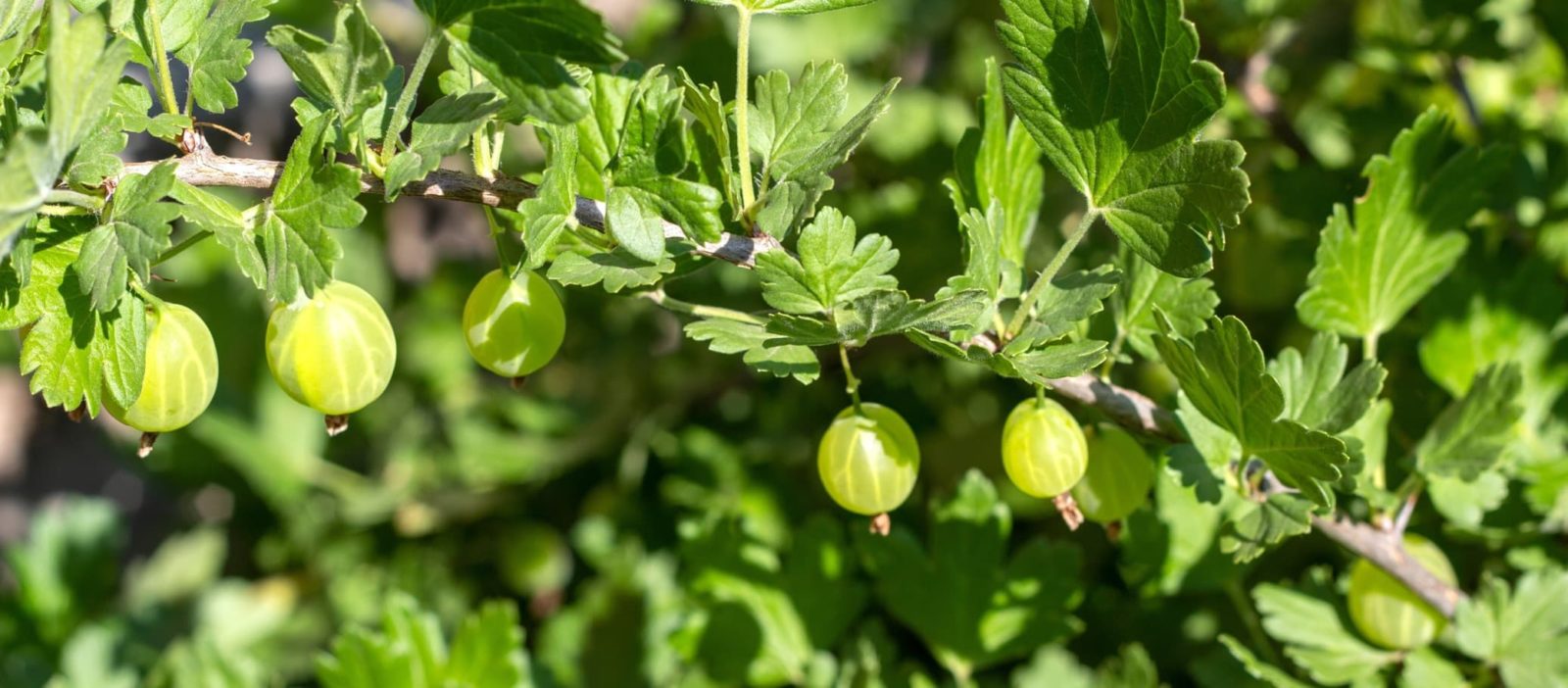
FRUIT > GOOSEBERRY > VARIETIES
Reviewed By PETER LICKORISH

Peter is a Horticulture Lecturer and self-employed Horticulturist, with a passion for diverse areas of the industry - from garden design to the science behind plant growth and propagation. He has completed the Royal Horticultural Society’s Master of Horticulture (MHort) Award and lectures on RHS courses at Bedford College.
IN THIS GUIDE
GOOSEBERRY GUIDES
Container Growing
Harvesting
Propagation
Pruning
Sawfly
Varieties
Underneath we present six essential gooseberry varieties and a further six supplemental ones.
All descend from Ribes uva-crispa, either solely or jointly.
While the colours of these varieties’ fruits are usually classified as yellow, green, and red – with a further classification of white for competition purposes – their hues are manifold and very varied, ranging from a very pale tone of the particular colour to a fully-saturated or very dark tone.
A properly pruned Gooseberry bush of most of these cultivars will attain a height that is a shade under 1.5m.
“Foremost in most gardeners’ minds when selecting a gooseberry is whether they want fruit which can be picked and eaten straight away – a dessert variety – or a sharper culinary variety, requiring cooking,” says Horticulture Technician Peter Lickorish.
“Next to consider is the shape of the plant – whilst vigorous varieties lend themselves to a bush or goblet shape, some of the narrower, slower growing cultivars can be used for cordon growing, including ‘Hinnonmaki Red.’
“This means training a plant to have a single main stem, with fruit clusters borne on short side-stems.
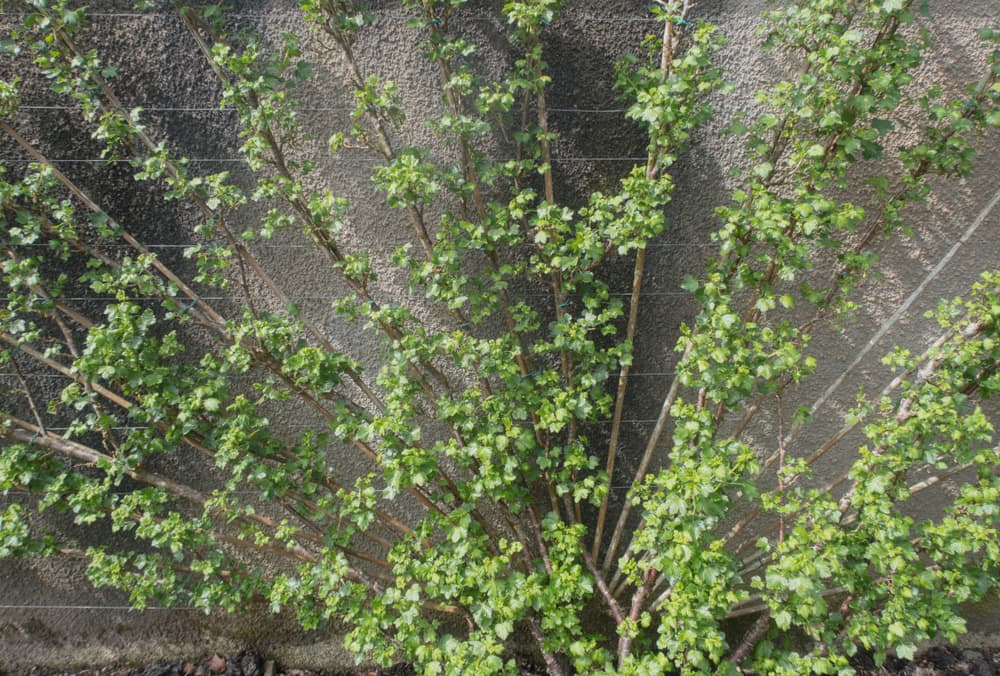
“They can be vertical, or oblique – trained at a 45-degree angle, which can slow leaf growth and enhance fruiting, compared to vertical cordons.
“This can add an interesting design element to a productive garden.
“Moderate size plants, such as ‘Captivator’, can even be fan-trained against a wall, so they take the shape of a Japanese fan, with branches radiating at different angles along supporting canes or wires.
“Finally, fruit size, and fruiting time – with some variation between early and late cultivars – and levels of disease tolerance are important considerations.”
Here are twelve options to consider:
1) Pax
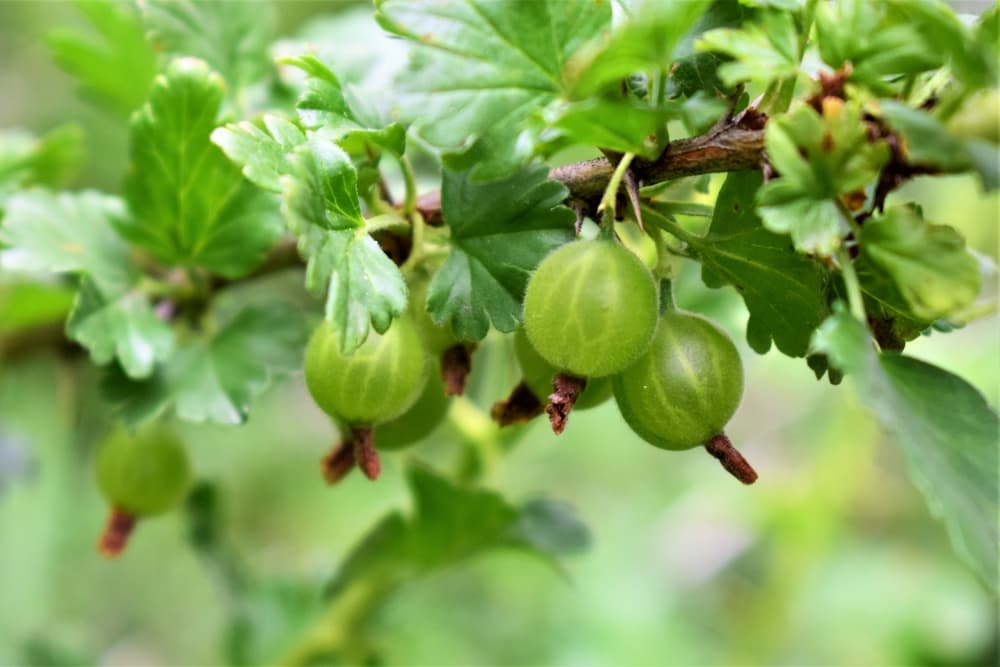
‘Pax’ is perhaps the ideal cultivar for the gardener who is new to gooseberries and has space for only one bush.
The mature bush is virtually thorn-free and has a lot of that ‘hybrid vigour.’ It is more disease-resistant than most varieties.
It bears a good yield of wine-red fruit in the June-July timeframe.
The fruit is very much an all-rounder – it is sweet without being over-sweet, and is great for eating straight off the bush and is equally good for making pies, desserts, and preserves.
2) ‘Captivator’
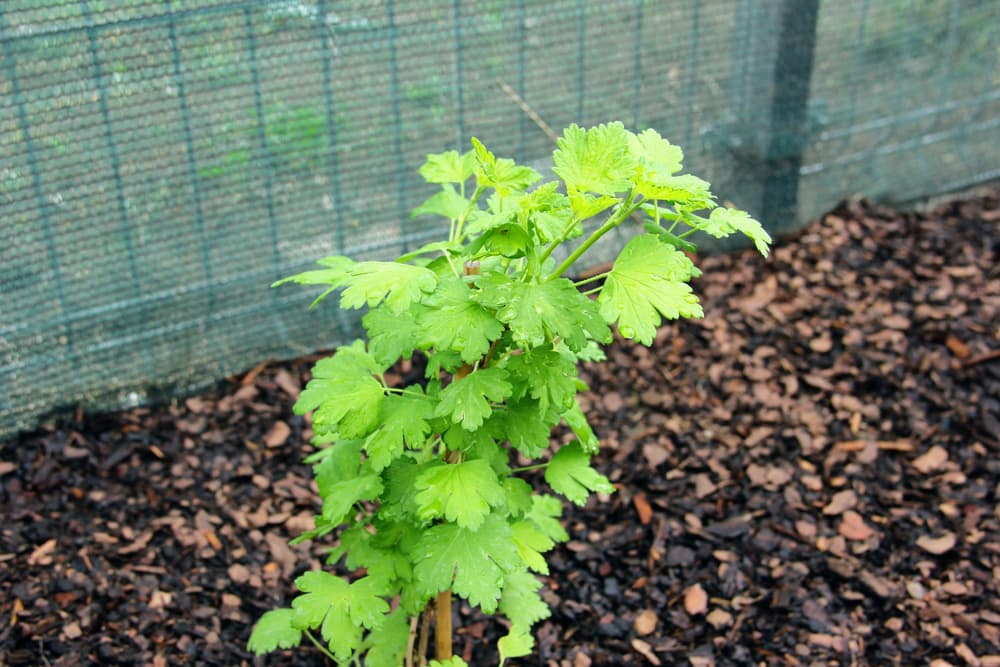
‘Captivating’ for more than one reason.
Casual gardeners will love these bushes for being nearly thorn-free come time to pick the fruit, and also for their high mildew-resistance.
The fruit is a rosy pink to rose red and is quite large, though this is an average-yielding variety.
Eaten ripe and raw, it is deliciously tart-sweet; slightly under-ripe it is excellent for preserves, pickles, and such.
3) ‘Whinhams Industry’
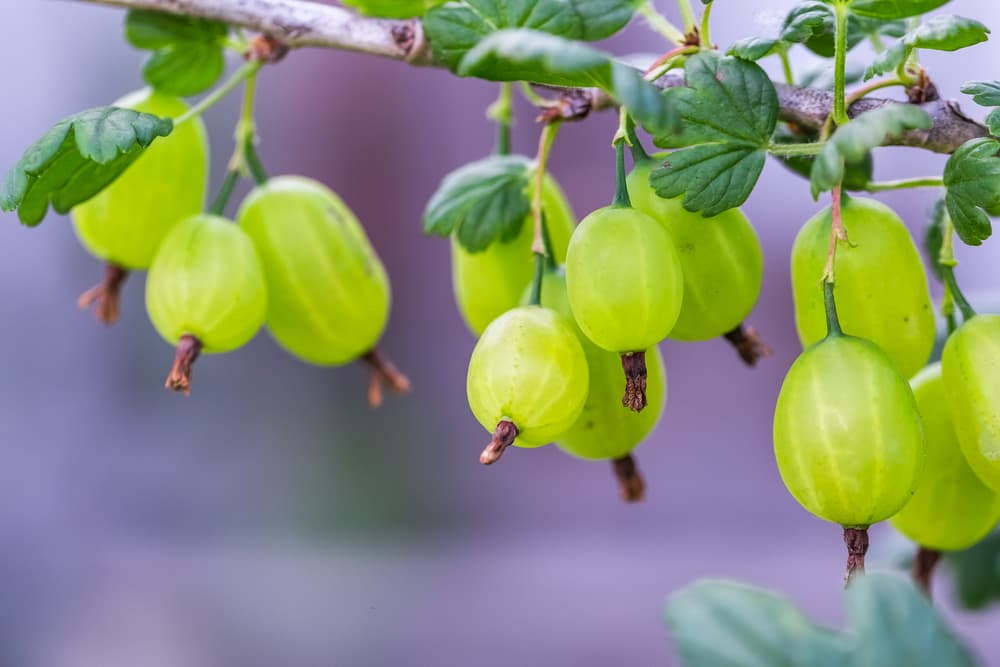
The British heirloom variety dating back to the Victorian Era.
Not as disease-resistant as newer varieties, it is very unfussy about soil but can be fussy about climate.
Now and again this moody (and very thorny) bush may fail to give a half-decent crop.
But when it gets the right climate conditions, mixing moist soil with sun, it will reward you with not only a massive harvest in June-July, but with the most luscious of fruit.
4) ‘Hinnonmaki Red’

Also know as: ‘Hinnonmaki Röd’; ‘Hinnonmaeki Red’
It may be on the verge of becoming the most popular garden-grown Gooseberry bush.
This Finnish cultivar has much to recommend it.
It is a vigorous grower, has excellent disease resistance, crops reliably, and also gives a well-above-average yield in July.
The perfectly red berries have an incredible ‘just right’ sweet flavour, thus competing with other types of berries that are preferred for their sweetness.
This is the Gooseberry for modern tastes.
“Its suitability to a cordon shape makes it a good fit for a tight space,” says Peter Lickorish.
5) ‘Black Velvet’
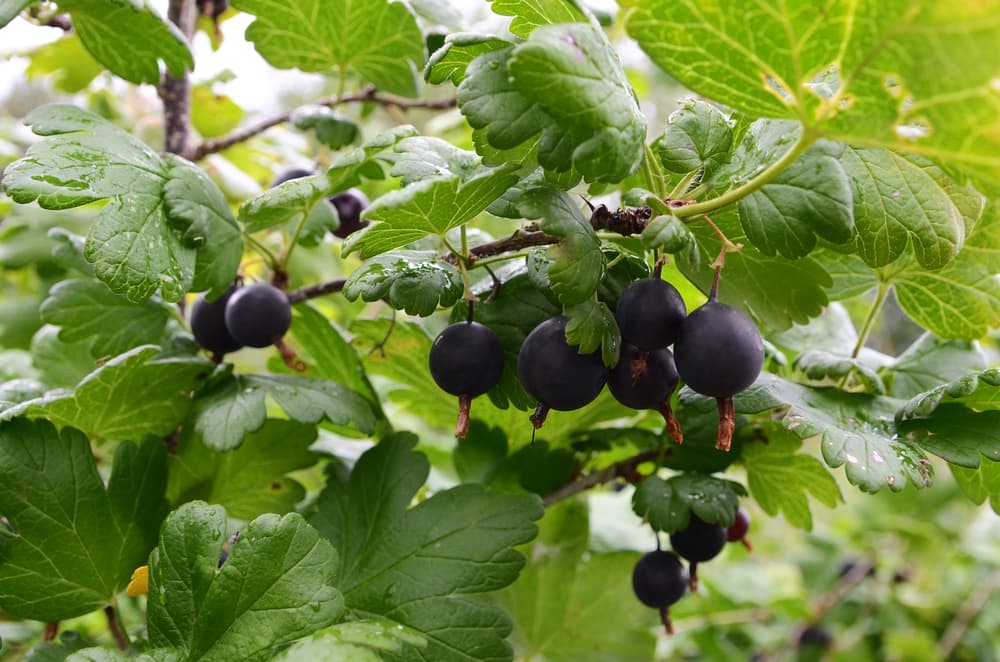
An American import that is just catching on in the UK so if you want to get something a little different, this hybrid is the Gooseberry bush for you.
And it is a little different.
First, for a Gooseberry bush it is comparatively shade loving.
Next, its fruit is a tad smaller than what we’re typically accustomed to in the UK but it makes up for it by producing thumping good crops.
“If you would like larger fruits, try thinning the clusters by around a third,” encourages Peter.
Finally, the ruby-red to blackish-red fruit is as sweet as sweet can be!
It is not thorn-free but it has less troublesome thorns than most.
6) ‘Hinnonmaki Yellow’
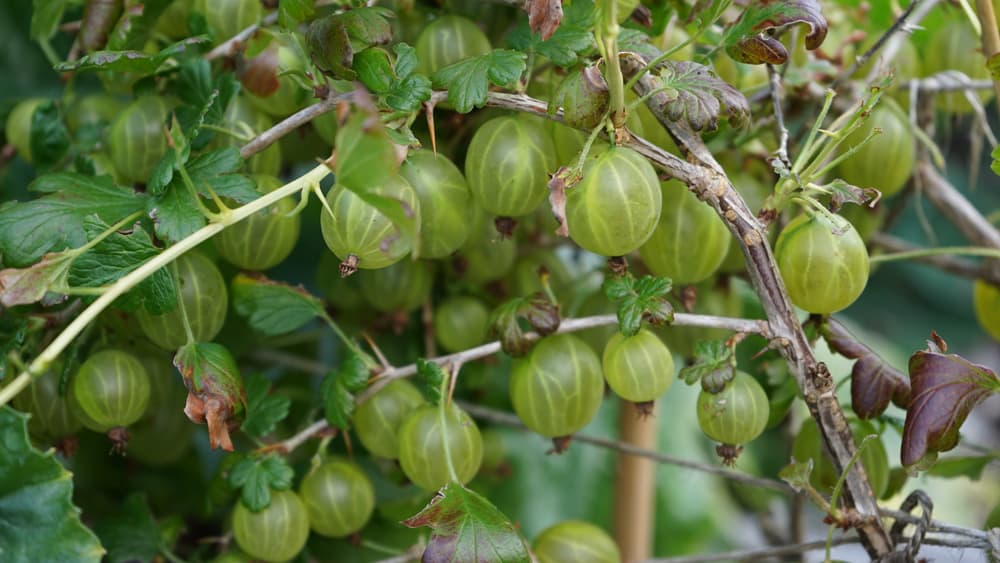
One of the most unfussy, reliable and trouble-free varieties; it does well even in heavyish soils.
Though the odd bush may succumb to disease, it is one of the most mildew-resistant cultivars.
It has a bushy but loose, saggy habit and may well need a trellis or support canes.
But be careful when you fix it up because this one is a little thorny.
It bears huge crops in July of greenish-yellow berries that are most unusual as they have a delightful aromatic sweetness that is redolent of apricot.
Other Varieties
7) ‘Rokula’
One of the newer cultivars that is an up-and-comer.
It is well-reputed for its high resistance to mildew.
It reliably produces a heavy crop that is among the earliest in the season.
Berries are already formed in May and are good to pop into the mouth come June.
The colour of Ruby Port, this variety’s berries are excellent to eat out of hand but they are, in fact, a top choice for many culinary purposes – preserves and pies as well as salsas and pickles
8) ‘Xenia’
A Swiss cultivar that is gradually catching on in the United Kingdom.
It may be billed as being nearly free of thorns but it’s not!
However, it has other virtues. It produces a good crop quite early, by June.
The berry is very smooth and also quite big.
Varying in colour from glazed red to rich red, it is quite sweet but not overly so.
It is one of those all-rounders that is excellent for eating raw out of hand, and equally good for using in culinary preparations.
Finally, if your plot has heavy, clayey soil, you can still grow Gooseberries, courtesy of this cultivar.
9) ‘Invicta’

Invicta has some serious thorns and only moderate resistance to mildew and leaf spot.
That out of the way, this cultivar is among the most impressive ones in growth and consistently produces the heaviest, hugest crops – far more than other varieties.
The berry’s colour is a translucent, limpid green but it is classified as a white for competition purposes.
Strongly flavoured, it is a top choice for all culinary purposes, from jams and jellies to sauces for savouries to accompaniment with pork and such.
10) ‘Greenfinch’
Has a bushy but self-contained habit that makes for a neat and tidy bush.
Though not one of the more popular varieties, it is ideally suited to British conditions and exhibits some tolerance for a range of soil and climatic conditions.
It produces average yields of average-sized fruit that is light green.
However, this variety’s claim to fame is that the tart, tangy berry is one of the best choices with which to prepare delicious sauces and salsas, to serve with cold cuts, and even with savoury foods like duck.
“It is regarded as a culinary, not a dessert variety – so not suitable for picking and eating straight from the bush,” adds Peter.
11) ‘Leveller’
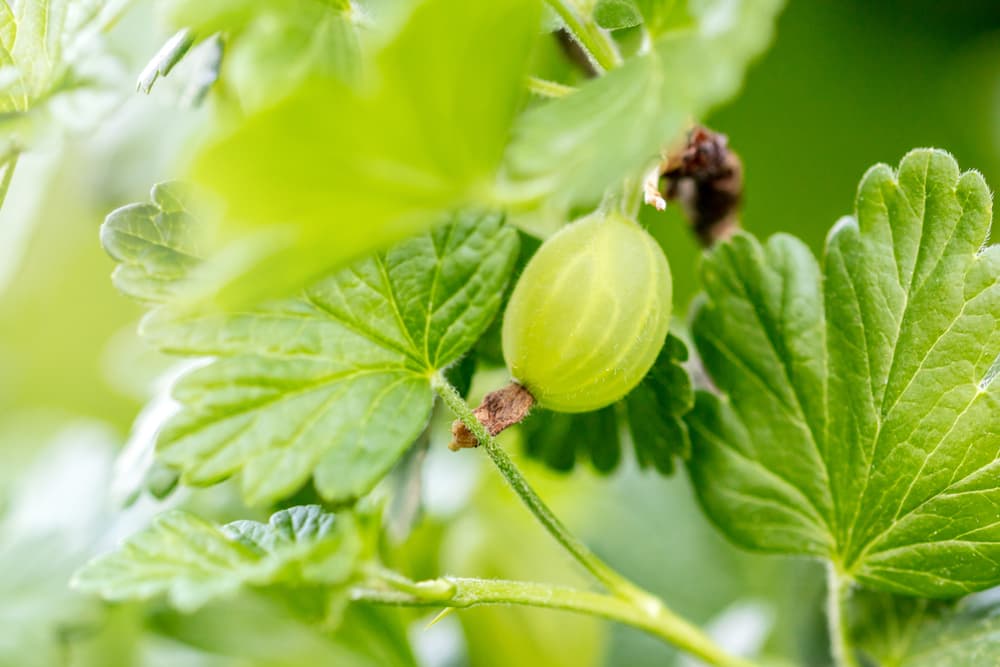
One of the UK’s most popular cultivars for more reasons than one.
It needs rich, fertile soil and the right climatic conditions, and when it gets those it bears good crops of relatively huge berries that are yellow when ripening and a light, shiny green when ripe.
This is one of those varieties that you pick under-ripe for pies and preserves, and even for pickling, and pick ripe to eat out of hand, exulting in the fruit’s rich sweetness.
This is not the most disease-resistant of cultivars; however, it is the one that produces most of the winners of largest-gooseberry contests!
12) ‘Martlet’
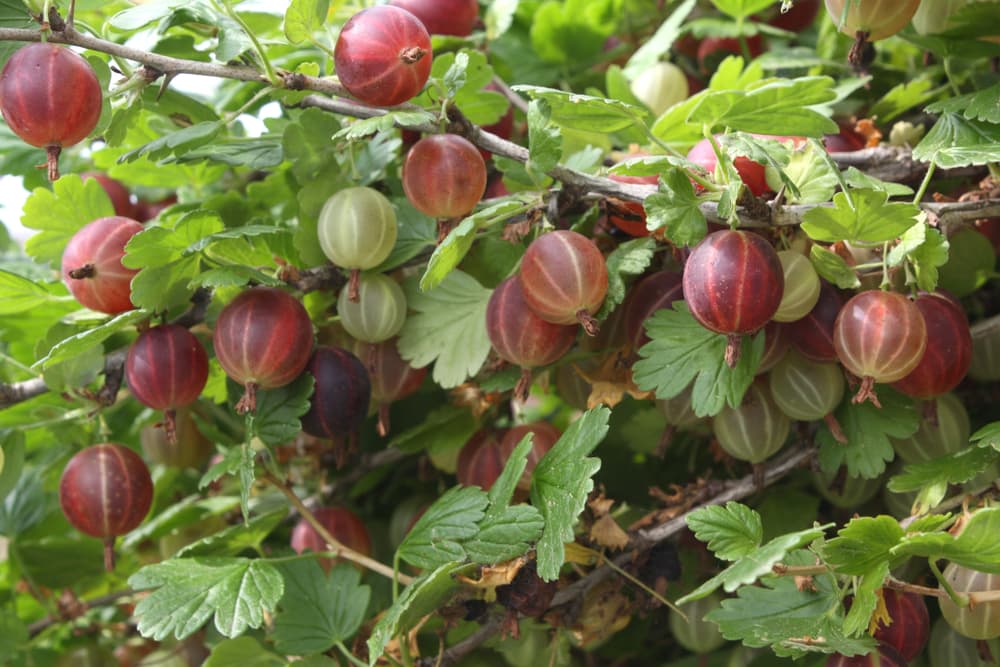
One of the newer varieties that has yet to become a favourite, but it well might.
To begin with, it is not only marketed as mildew-resistant, it really is.
Next, the bush itself is vigorous and adaptable.
It yields huge crops of fruit that can be picked throughout June.
As for the berry, it is of a rich red hue, is quite large, and has that just-right sweetness that makes it a classic dessert berry – ideal for eating raw, serving in fruit salads, or making desserts with.

